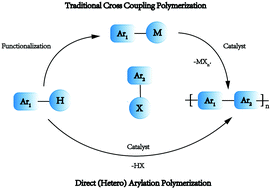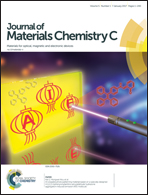Eco-friendly direct (hetero)-arylation polymerization: scope and limitation
Abstract
Polymer semiconductors have recently attracted considerable attention owing to their (i) excellent optical properties, (ii) processability, (iii) inherent tunability of the energetics, and (iv) synthetic versatility. Consequently, researchers have shown great interest in developing eco-friendly polymerization methods to reduce the synthetic cost of such macromolecular materials, including the so-called direct (hetero)-arylation polymerization (DHAP). In addition to reducing the number of synthetic steps, required in conventional cross-coupling polymerizations, DHAP avoids the use of lithiated and/or stannylated intermediates that are highly toxic and/or dangerous. In this contribution, we reviewed a number of conjugated polymers prepared by DHAP for applications in organic electronics, and more precisely for organic photovoltaics and field-effect transistors. Moreover, emphasis has been put on polymerization reaction conditions (i.e., the nature of the catalysts, ligands and solvents) and their impact on the properties of the material. Even though some optimizations still remain, regarding the current trends, it is obvious that DHAP will play a larger role in the design and synthesis of polymer semiconductors.

- This article is part of the themed collection: Recent Review Articles

 Please wait while we load your content...
Please wait while we load your content...